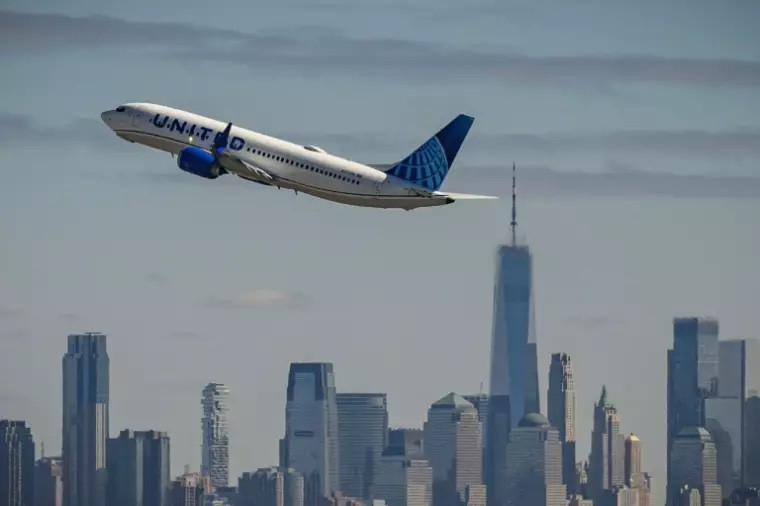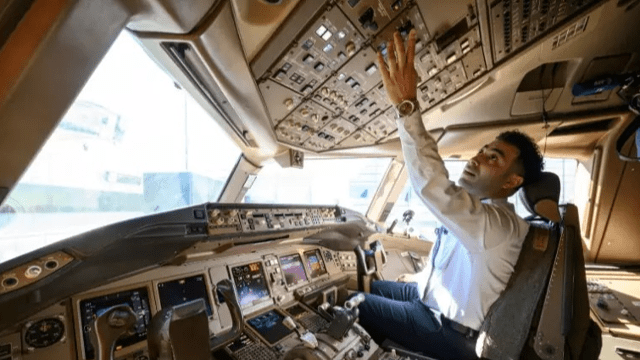Faced with a limited number of pilots as air traffic picks up in the United States, airlines and unions are agreeing on a long-neglected issue: the need for greater diversity in the cockpit.
In the country, 95.7% of pilots and flight engineers are white and 90.8% are men, according to official data.
Regional Airlines Association (RAA) President Faye Malarkey Black blasted the "very limited diversity" at the controls of aircraft at a recent congressional hearing, while Air Line Pilots Association (ALPA) President Jason Ambrosi called for change in the face of a glaring lack of women and minorities among his counterparts.
Beyond the need to increase representation in the workplace, attracting people with more diverse backgrounds could allow airlines to replace the many pilots who opted to take advantage of the voluntary redundancy schemes put in place when traffic collapsed in 2020.
Demand for air travel has since picked up, but airlines can no longer rely on one of their main recruitment channels: the military.
In 2000, half of the pilots at the largest airlines were former military personnel. As the military has acquired many remotely piloted aircraft, this proportion has fallen to 15%.
Three quarters of the pilots of national airlines now come from regional airlines, according to Oliver Wyman.

A pilot at the controls of a United Airlines Boeing 787 at Newark International Airport, ( AFP / Ed JONES )
According to their estimates, there will be a shortage of 17,000 pilots in North America by 2032. Previous estimates were even more alarming. But in the meantime, airlines have implemented training programmes, such as United Airlines, which wants at least half of the recruits at its aviation academy to be women or minorities.
Airlines have also eliminated routes serving small airports, reducing the need for pilots in turn, notes Geoff Murray of Oliver Wyman. European airlines are not in the same situation, thanks to measures put in place by governments during the pandemic, which prevented pilots from leaving.
But they are also likely to face recruitment problems in the next three years as international air traffic rebounds, says Geoff Murray.
Raising the retirement age?
The pilot shortage is expected to get worse due to "a coming tsunami of retirements", RAA president Faye Malarkey Black told the hearing.
Her solution: raise the mandatory retirement age for pilots from 65 to 67. She also called for a review of the rules requiring pilots to have flown at least 1,500 hours before they can take the controls of a commercial aircraft. Emphasizing that they were now largely assisted by steering tools. The unions do not agree with these solutions. They are risky," said Jason Ambrosi of ALPA, pointing to the drastic reduction in fatal accidents since the minimum flight time threshold was raised from 250 to 1,500 in 2010.
"Responding to the temporary problems faced by the sector after Covid with permanent changes to pilot training and qualification requirements is misguided and dangerous," he said. He said the impact of retirements was overestimated. And airlines should not blame the lack of pilots for the closure of regional routes, taken because they are not profitable enough, he argued.

A United Airlines plane takes off from Newark International Airport on March 9, 2023 in New Jersey ( AFP / Ed JONES )
However, airline and pilot representatives agree that the cost of pilot training, which can exceed $100,000, excludes many diverse applicants with limited resources.
A government task force has recommended increased awareness campaigns for aviation jobs and the establishment of dedicated scholarships. Lawmakers are expected to consider these proposals when they debate the next bill to fund the agency that oversees aviation, the FAA.
Source: https://www.boursorama.com/actualite-economique/actualites/en-manque-de-pilotes-les-compagnies-americaines-misent-sur-la-diversite-9e26eabb40730b0a2d0c282ae0b50994

Comments0
Please log in to see or add a comment
Suggested Articles


